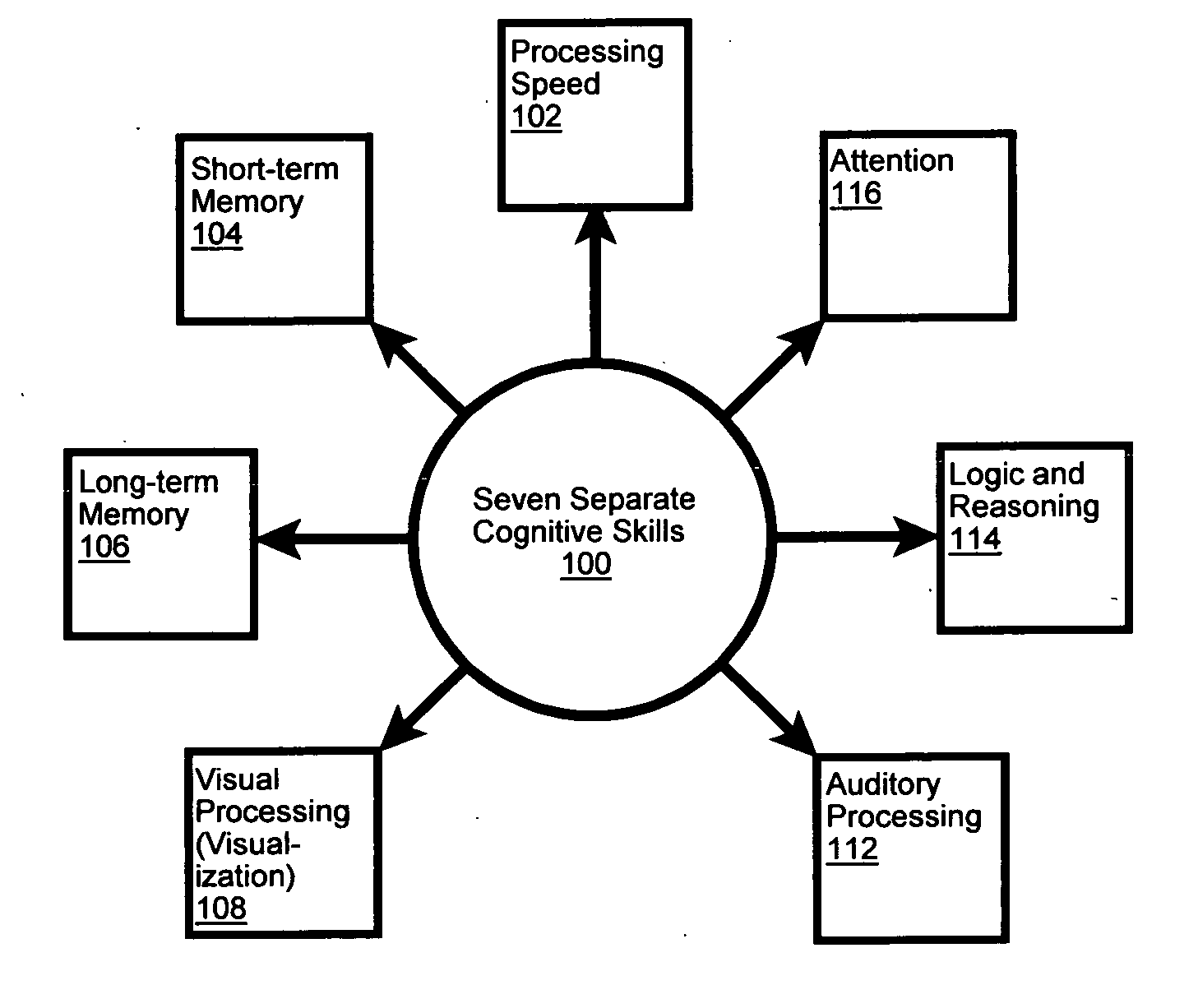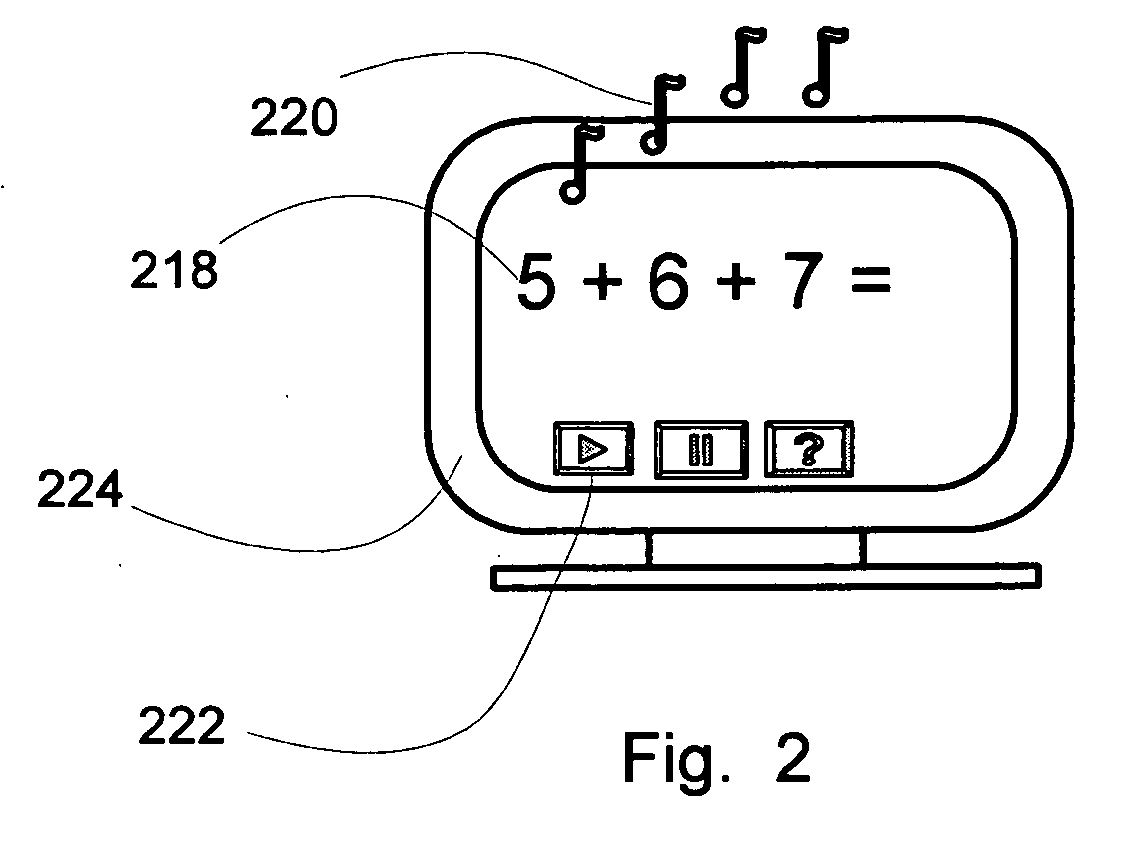Method for developing cognitive skills
a cognitive skill and training technology, applied in the field of education, can solve the problems of poor cognitive skills, automatic disadvantage of children, poor learning skills, poor “processing speed” skills, etc., to increase the intensity of conscious stimuli, increase the complexity of conscious stimuli, and increase the pace of repetitive primary tasks.
- Summary
- Abstract
- Description
- Claims
- Application Information
AI Technical Summary
Benefits of technology
Problems solved by technology
Method used
Image
Examples
Embodiment Construction
[0078]FIG. 1 is a block diagram of seven cognitive skills. These seven cognitive skills 100 work together but are separate and independent of each other. For example, solving an equation may require reasoning, long term memory, processing speed, and attention, but each one separately are not dependent on the other, however, solving the equation is dependent on all of them. If one on these skills is significantly weak, it will affect either the accuracy, time, or effort required to complete the task. Each of these skill areas actually represents a number of sub-skills, those sub-skills of a given congiskill are related based upon factor analysis, but whose exact inter-relationships indicate the complexity of human cognition. Because each of these sub-skills are to a small degree correlated to each other but yet separate enough to be distinct, training one sub-skill under a major skill will benefit the other sub-skills under the same major skill but to a lesser degree than the skill b...
PUM
 Login to View More
Login to View More Abstract
Description
Claims
Application Information
 Login to View More
Login to View More - R&D
- Intellectual Property
- Life Sciences
- Materials
- Tech Scout
- Unparalleled Data Quality
- Higher Quality Content
- 60% Fewer Hallucinations
Browse by: Latest US Patents, China's latest patents, Technical Efficacy Thesaurus, Application Domain, Technology Topic, Popular Technical Reports.
© 2025 PatSnap. All rights reserved.Legal|Privacy policy|Modern Slavery Act Transparency Statement|Sitemap|About US| Contact US: help@patsnap.com



